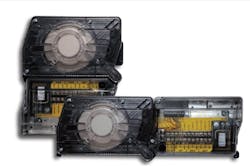Fire & Life Safety: HVAC Duct Smoke Detector Testing
Duct smoke detector maintenance requirements are not included in the NFPA standard that covers HVAC systems (NFPA 90A or 90B); however, the International Code Council’s 2015 Mechanical Code does state that the standard for maintenance inspections shall be performed in accordance with the ASHRAE/ACCA/ANSI standard number 180. Still, 180 contains no mention of duct detectors.
This implies that most businesses seem to accept the run to failure (RTF) “maintenance plan” for HVAC systems – allow equipment to operate until it breaks. In this case, the duct detectors are ignored until they cause the building to get too hot or too cold because the forced air system is not functioning.
For those clients who wonder who is inspecting and testing HVAC duct detectors on a yearly basis, the answer is probably nobody; however, for those that do, it tends to fall on fire alarm installation companies because of NFPA 72.
This leads to a handful of reader questions:
1. How does the fire alarm system installation company get stuck with testing and cleaning duct smoke detectors?
Since HVAC systems do not fall under strict life-safety requirements, the duct detectors only become part of the fire alarm system due to their interconnection, and thus fall under the fire alarm rules and standards for ongoing testing and maintenance.
Once connected to the fire alarm system, the rules for installation, testing, and inspecting them are covered in NFPA 72 – under which compliance is required.
The fire alarm system’s primary goal is to enable occupants to escape more quickly and allow a safer building for firefighters to enter. To ensure reliability, we provide supervision and monitoring of critical equipment; however, when duct detectors are required by HVAC rules, they are not required to send signals to where people are on duty to respond, unless a fire alarm evacuation system is also required for that building.
Additionally, when they are not connected to a fire alarm system, duct detector wiring will not cause a trouble signal if/when they fail due to a wiring fault.
2. Can my company opt-out of testing and maintaining some of these duct detectors?
According to NFPA 72, 14.2.7 – you must be both “qualified and experienced” in the arrangement and operation of any interfaced equipment and any emergency control functions that are part of the fire alarm system. There is no shame in the average/small alarm company avoiding any project with terms, for example, such as “blast wall” or “deluge system” or “sprinkler system antifreeze” and “releasing system” – to name a few.
In fact, a few paragraphs after the “qualified and experienced” rule, there is a requirement for everyone who is providing fire alarm system testing and inspection services to provide a written test plan that will “document what devices will and will not be actually tested.” This is where you can explain, for example, that your technician has only verified that each elevator landing’s smoke detector has properly caused the associated relay to operate – a technician does not verify the proper response of the elevator system.
Likewise, a test plan can say that no duct detectors will be tested or serviced as part of the contract agreement, and that the responsibility for any required T&I will remain with the building owner.
3. If I supply the duct smoke detector, power it, and connect it to the fire alarm system, does the HVAC contractor still need to install a Remote Test Station?
Yes, if the duct detector cannot be reset at the FACP or annunciator, then a separate test/reset station will need to be installed for resetting the duct detector per NFPA 72 section 23.8.5.4.6.4 – “Where duct smoke detectors are not resettable from the protected premises fire alarm system, a listed alarm/ supervisory indicator with an integral reset switch shall be provided in an accessible location.”
In case you are wondering, an “accessible location” is never behind locked doors or requires the use of a ladder because it’s installed too high on the wall or ceiling.
July 2017 Column Correction
In my July issue column, “End of Line: Beginning of a Problem?” (see www.securityinfowatch.com/12346509), I quoted a section titled, “Violation of Duties” giving credit to the IBC, when in fact it was from my own state’s soon-to-be-adopted Ohio Building Code Section 104.4. Please check your own individual state’s adopted language for clarification.
Greg Kessinger has been SD&I’s fire alarm and codes expert and a regular contributor for more than 15 years. Please email him your fire & life safety questions for potential inclusion in this column at [email protected].


